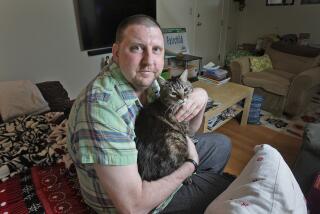On Caring for Patients Who Can’t Be Cured
- Share via
Though well-versed in cures, many doctors are admittedly at a loss once they’ve exhausted all remedies. Now a top medical journal is trying to change that.
Using discussions of real cases, the Journal of the American Medical Assn. has begun a twice-monthly series to improve the way doctors care for dying patients, both physically and psychologically.
“Perspectives on Care at the Close of Life” will teach physicians how to guide terminally ill patients through their last days, from helping them confront the inevitable to controlling their pain. In short, it is intended to make them better doctors.
“Being able to make a commitment to go through . . . the course of illness--even through to death--and be a support to them and their family is an important part of what physicians can offer patients at the end of life,” said Dr. Michael W. Rabow, one of three editors of the series.
In today’s health care environment, he added, “where relationships are very transient, this important promise is one many physicians don’t feel they can make.” Many patients even fear the doctor will abandon them once he or she has run out of life-saving tools, Rabow said.
The journal’s decision to add the column reflects a growing demand for palliative care and dying patients’ dissatisfaction with their doctors.
The series’ editors, all doctors at the UC San Francisco department of medicine, agree that their colleagues generally get little or no training in caring for dying patients in medical school or residencies.
One widely cited study found that only 26% of medical residency programs offered courses on end-of-life care in 1995 and that 15% of residency programs offered no formal training.
Rabow earlier this year documented in JAMA how inadequately top medical textbooks address end-of-life issues.
Yet treating the dying is a natural part of following patients through the life cycle, said Dr. Stephen J. McPhee, another of the series’ editors.
“As you age as a physician, the patients you care for age with you,” said McPhee, who has followed some of his patients for nearly 21 years. He recently saw two patients, one 88 and the other 76, “both of whom are going to die within the next few weeks. When I started practicing here, very few of my patients were actively dying.”
Studies have found many dying patients in pain and half of oncologists rating their ability to treat pain as poor. According to a study co-written by Dr. Steven Z. Pantilat, the series’ other co-editor, doctors in hospital-based practices viewed end-of-life care as being as important cardiology or chest medicine, although they received much less training in it.
Said Rabow: “Taking good care of patients at the end of life, or at least recognizing when experts need to be brought in to do that, is becoming part of what everyone expects from their doctor.”
In its first year, JAMA’s new end-of-life section will tackle doctor-patient conversations about death, symptom management, hospice referrals, cultural differences in dealing with death, spiritual and psychological issues, grief and bereavement.
JAMA offers “a bully pulpit” to reach a large audience of physicians, students, trainees, nurses, social workers and chaplains, McPhee said.
The debut column, published Wednesday, offered suggestions about how doctors and nurses can begin discussions about end-of-life care with patients--and why those talks should begin earlier than what’s typical.
Pantilat said that terminally ill patients need time to make informed choices about their final months and come to terms with death.
Older doctors, practicing under a model of patient care in which the topic of dying “was essentially denied,” have a tougher task. But, Rabow said, with medical training exposing doctors earlier in their careers to death and the limits of modern medical technology, “physicians are going to have an easier time understanding what curing means, what healing means and what the end of a life can mean even after struggling against disease for many years.”






